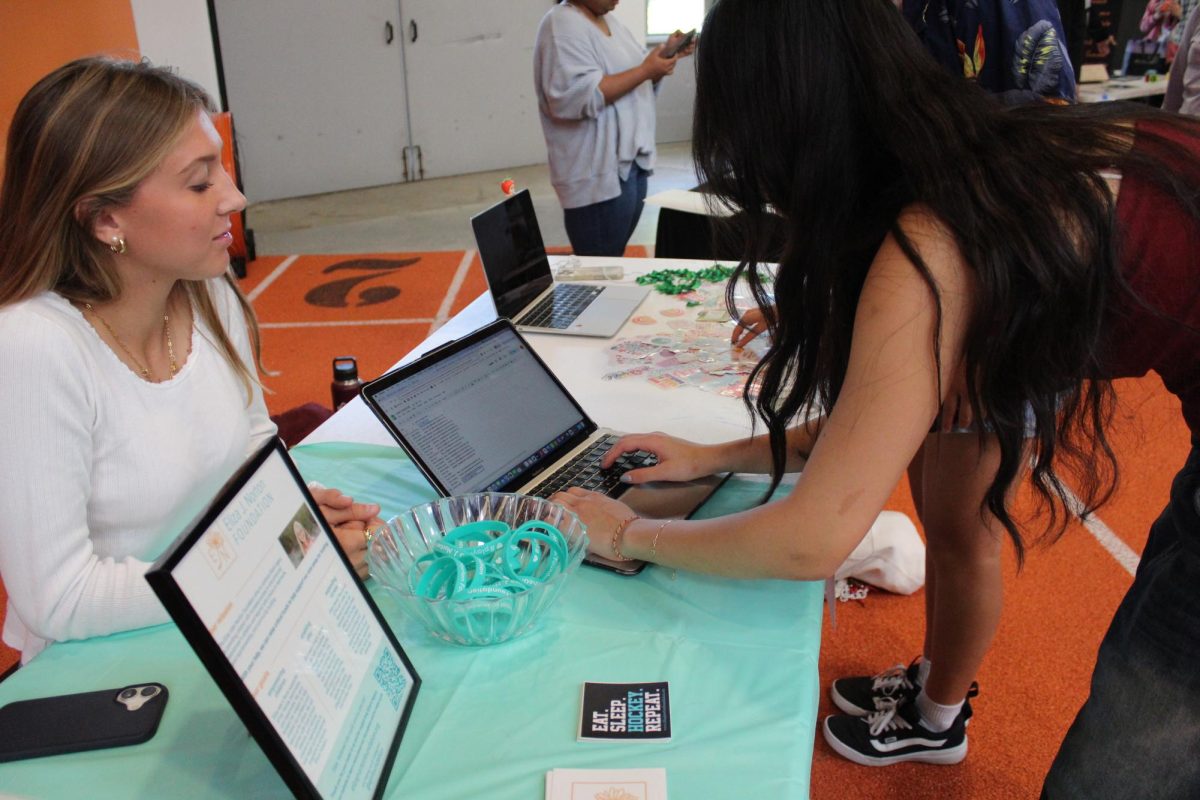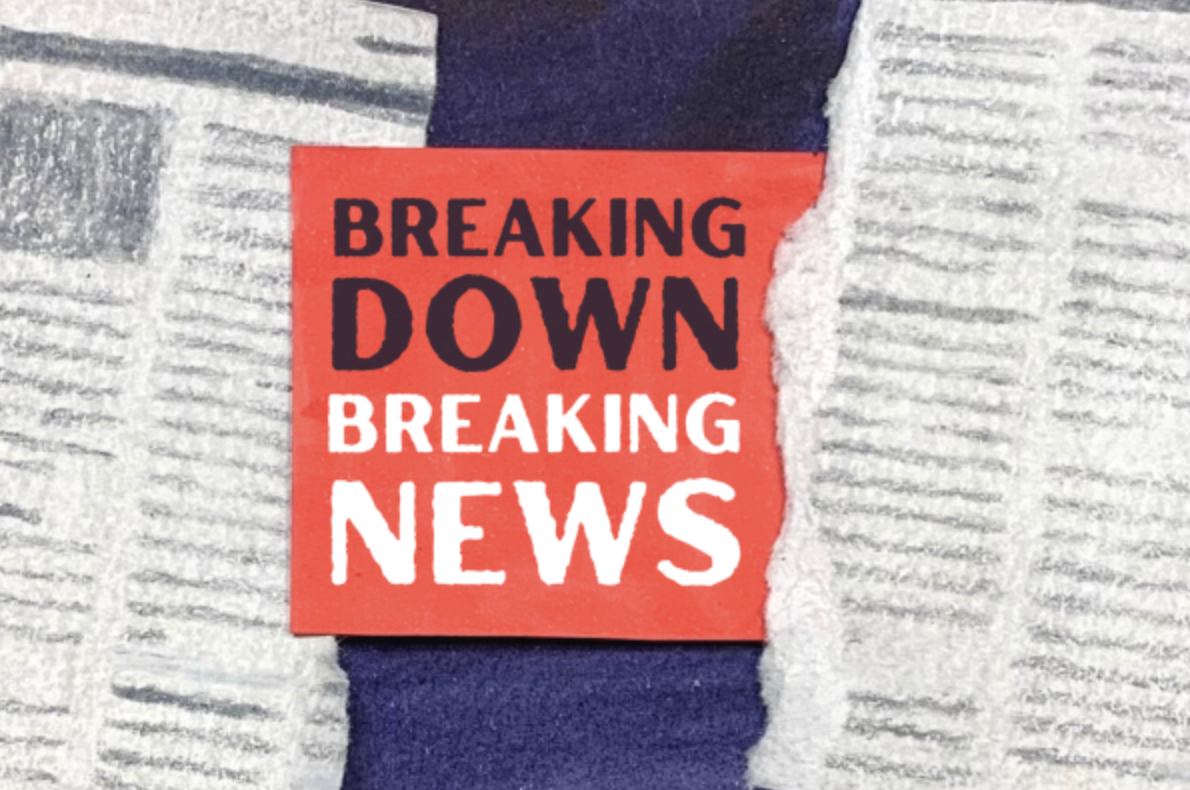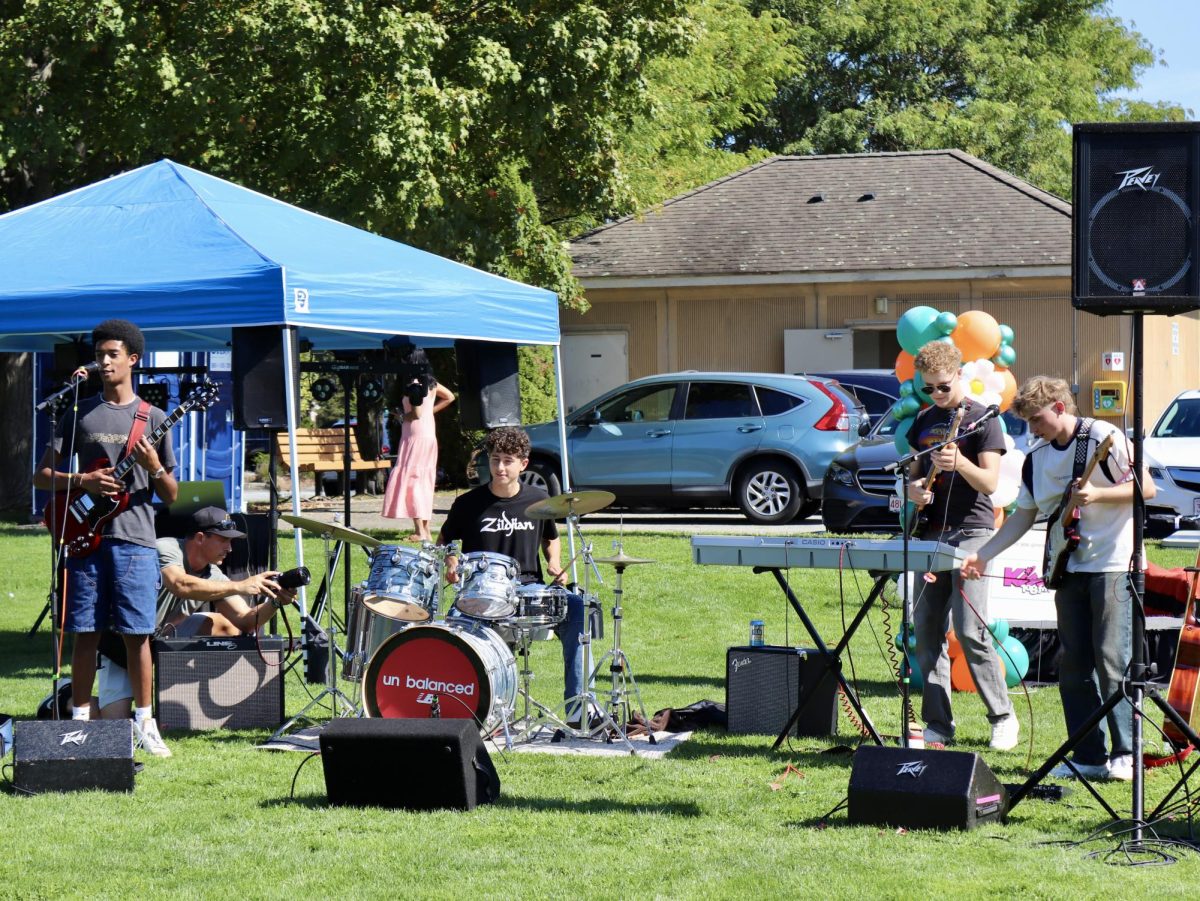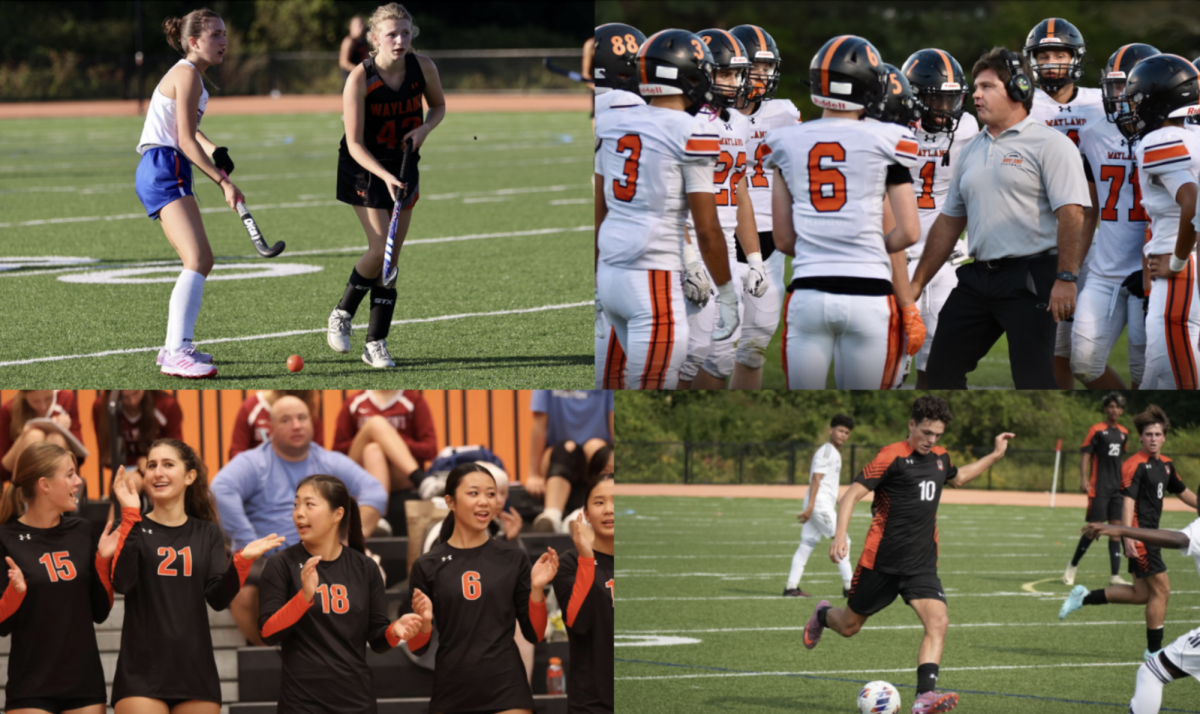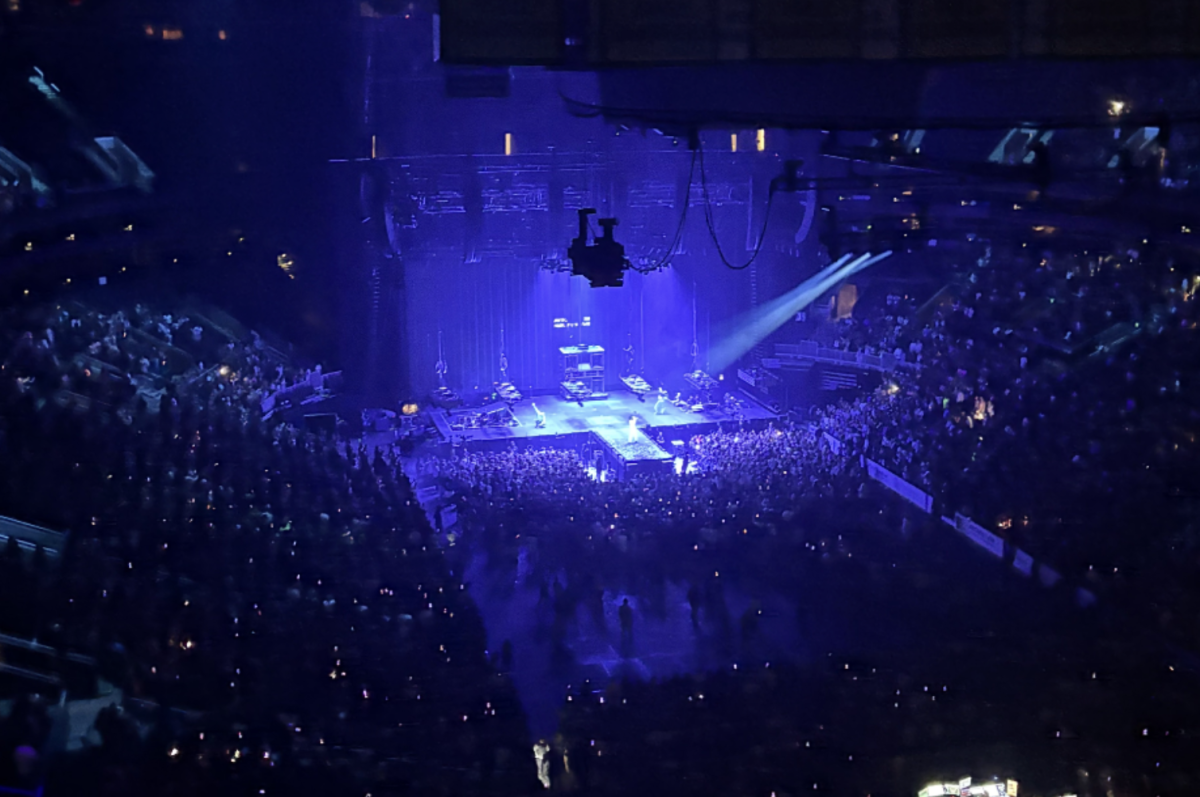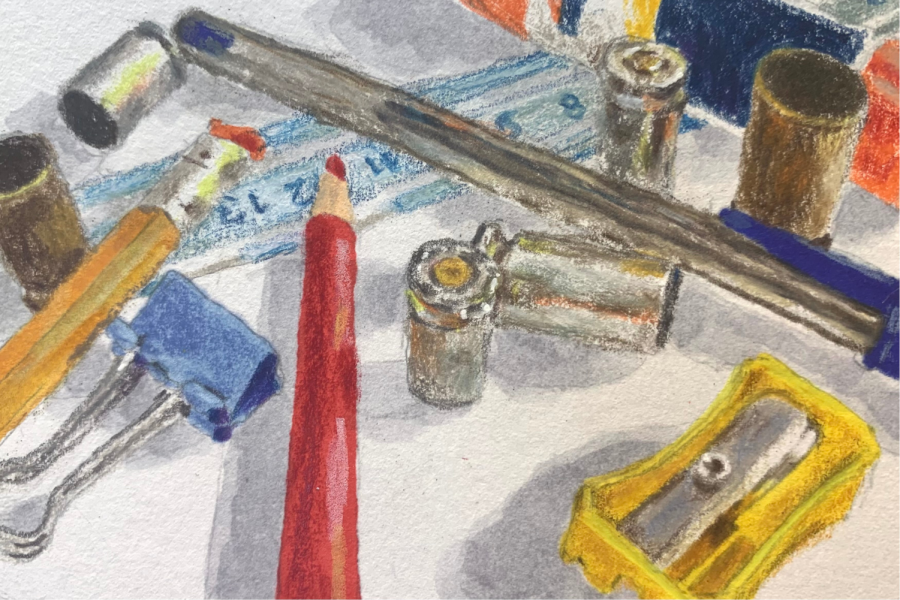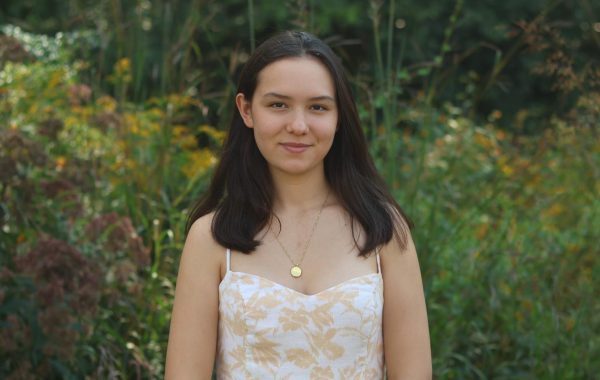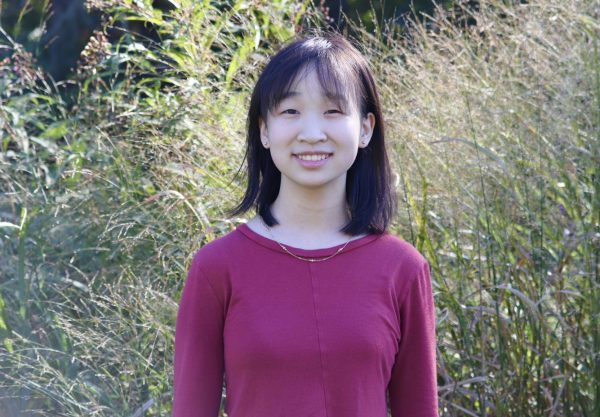Some questions, some answers: A high school sophomore’s take on school mass shootings in America
Credit: Alyssa Ao
WSPN’s Kally Proctor discusses the Uvalde shooting and steps schools and policymakers could take to decrease the number of mass school shootings in the United States.
June 1, 2022
I’m a sophomore in high school and I am afraid. I’m afraid for myself and afraid for my country.
I go to school every day, I work hard, I take it seriously, I generally have fun, and yet, I am afraid. It used to be that I was afraid of chemistry tests. Now, I am afraid for my life.
As we all know, this past week, 19 children and two teachers at the Robb Elementary School in Uvalde, Texas were killed in a mass shooting by an 18 year-old that barricaded themselves in a fourth grade classroom with an assault rifle.
On its own, it’s a horrendous event. So many lives lost and so many more lives forever affected. The staggering death toll makes it the deadliest school shooting since a gunman shot and killed 26 people at Sandy Hook Elementary School in Newtown, CT a decade ago.
In fact, in the approximately 10 years since Sandy Hook leading up to this past week’s tragedy in Uvalde, there have been 10 other mass shootings involving five or more people killed or injured at elementary schools through high schools in America. That’s one school mass shooting every year. The result: 48 dead and 96 wounded, excluding Newtown and Uvalde. Together with those shootings, the numbers total 97 dead and 116 wounded.
It sounds like I’m talking about battlefield statistics… maybe something out of the war in Ukraine, but I’m not. I’m talking about mostly young kids shot down in the prime of day in the supposed safety of their schools. Shot down for doing nothing at all except trying to receive their education.
The numbers are shocking, but so are the circumstances that have led to these deaths. In the aftermath of yet another tragic school shooting, I am left wondering how did we get here, and what can we do that will make a difference?
I have more questions than answers. But I also have some suggestions that can get us going in the right direction. Like most complicated subjects, the “answer” is complex and likely involves multiple strategies at multiple levels, from in-school programs to federal and state policies.
Is the answer increased training and security for students and teachers? Maybe. After all, what did we do after 9/11? We installed extensive security checkpoints at airports and we now have to endure lengthy security screenings before flights. It’s a pain, but we all seem to put up with it for the sake of our safety. So far, these measures have worked.
Yet, the Robb Elementary School gunman came in through an open back door. Supposedly, schools (including Robb Elementary) have been trained not to leave back doors open, but that certainly didn’t help here.
We do need more and better security at our schools. Nonetheless, is that really going to stop a kid, guns-blazing lead by an AR-15 or some other assault rifle? Probably not, unless we make our schools more like prisons, and I think that’s something that rubs us all the wrong way.
People at last week’s NRA (National Rifle Association) convention argued for “arming the good guys,” providing teachers and administrators with weapons to combat active shooters. I have a hard time believing that more guns at schools is the answer.
An increase in loaded weapons in possession of non-trained security personnel seems like a recipe for disaster. In addition, as we saw in the Uvalde shooting, even armed law enforcement officials were ineffective at charging on and taking down an active shooter, so why would we put school staff members in that position?
Don’t get me wrong, we probably do need better security at our schools, and that might mean the presence of more armed security, generally called school security officers (otherwise known as police). Maybe this is part of the solution, but I don’t think it’s the entire solution.
But while I don’t want to politicize this terrible event, we just can’t escape the elephant in the room. Shouldn’t we do something about guns, more importantly, about assault weapons? These weapons of war should either be banned or made much harder to get.
It is unclear if these mass shootings could have been totally prevented without the access to assault weapons. However, the number of deaths and injuries likely would have been minimized if the shooters didn’t have rapid-fire, semi-automatic shooting capabilities.
Indeed, the easy availability of assault weapons is one thing that’s different in the U.S. from most of the world on this matter. That is, besides the number of mass shootings that occur. There’s just no arguing that these two facts go hand in hand.
Now, I’m not seeking to repeal the Second Amendment. Approximately 32% of adult Americans are estimated to be gun owners, and repealing or even revising the Second Amendment is just not practical at this time. So, as much as I may dislike guns personally, I’m not proposing banning small, non-automated, non-extreme caliber weapons like conventional pistols and rifles.
But it wouldn’t be trespassing on the American Constitution, a precious document if there ever was one, to conclude that the Second Amendment doesn’t give us the right to bear any and all arms, just some arms.
The Second Amendment doesn’t say anything about the right to own assault weapons which really only have one purpose—mass murder. Creating restrictions on the types of weapons people can purchase, in addition to the types of people who can buy and possess them, now that’s wholly within the Constitution.
Will I feel safer at school if we pass laws against assault rifles? Yes. There’s no doubt. Me and lots of other kids. I’m talking about America’s children and grandchildren.
Of course, most constitutional “originalists” claim that limiting assault weapons, or making it harder for people to get guns—like increasing the age limit or instituting pre-license mental health checks—is a slippery slope where the outcome becomes a massive infringement on the Second Amendment. But, to me, that’s a ruse. It’s no more of a slippery slope than a hard line, a hard line at outlawing war weapons to protect against more mass murders and more people getting guns that shouldn’t have them. It doesn’t need to be a political or philosophical thing. It’s a practical thing. A big one. After all, we already banned assault weapons for 10 years under Bill Clinton in 1994, and the Second Amendment survived just fine.
Along the same lines, so many of these school mass shootings are done by students. In Uvalde, the suspect was 18 years-old, the legal age limit for purchasing firearms. And yet, the legal age limit for smoking and drinking is 21 years-old. Why not the same requirement for buying a gun? Do policy makers really believe we are safer with more 18-21 year olds running around with guns than without? Sounds like a disaster waiting to happen, and guess what, it is.
There’s also been some discussion about mandatory psychological screening for gun owners. The practicality of how this would get implemented, outside of banning sales to people who have been judged mentally defective or committed to a mental institution (to whom sales are already banned), seems challenging, to say the least.
Nonetheless, this subject should be on the table, to the extent people can develop better practical solutions along these lines. Conceptually, I think most people support keeping guns away from crazy people. This shouldn’t be a political issue as long as workable programs can be developed to help keep guns away from mentally unstable people.
What else needs to happen before I can feel safe at school again? I don’t know. Again, I have questions and I have answers, but none of this is perfect. I’m just trying to take a step in the right direction. I’m trying to protect myself and my fellow classmates across America.
We can start with constraining war weapons and making it more difficult for young people to get guns. Then, we can take it from there. Because in the end, this is about Americans being killed at an alarming rate in everyday schools across America.
This is about how it’s become normal for people to walk into a school and shoot kids and teachers. This is about how it’s become normal to hear about events like this in the news. This is about how it’s become normal to read about more and more deaths in our classrooms, something that should be far from normal.
The biggest problem isn’t that this is happening here and there. It’s that it’s happening everywhere and much too frequently for anyone’s peace of mind.
This is why I’m scared: It could happen here. It could happen to me. It could happen to you. It’s time we take action to change that.



